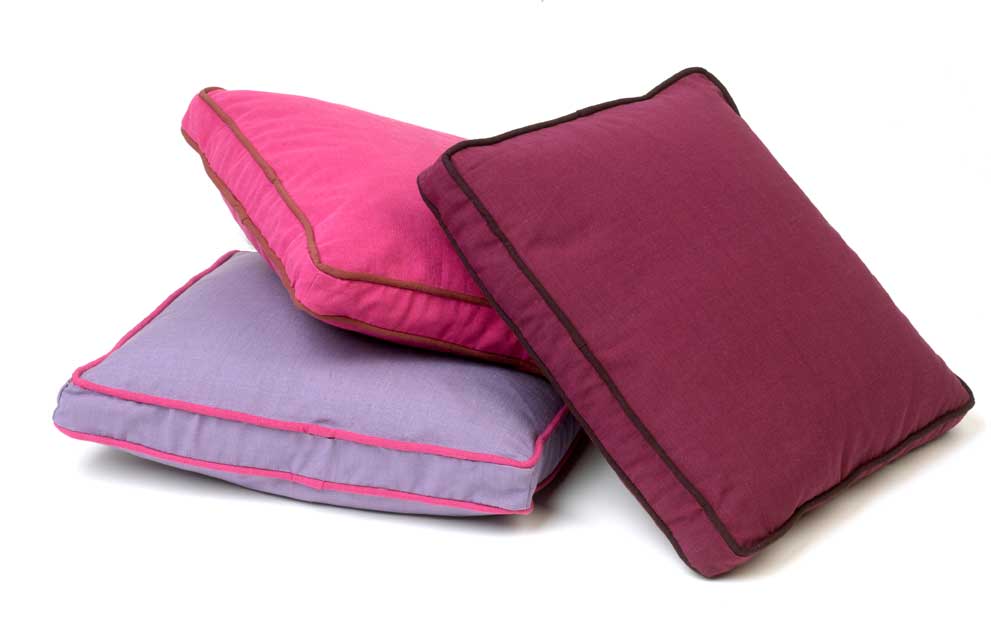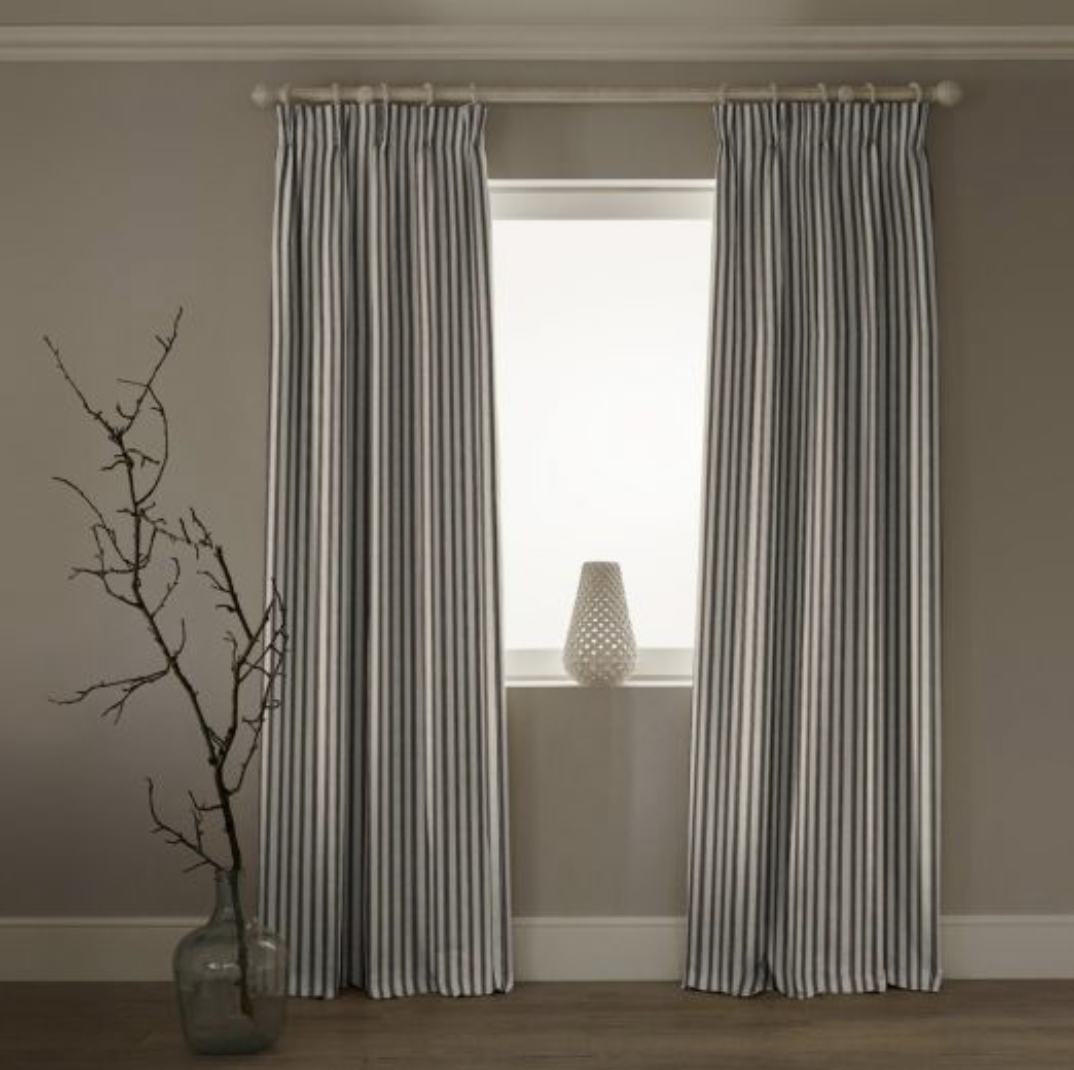Moral fibre: choose organic cotton
Despite being used increasingly for clothing, organic fabrics for use in the home are remain pretty hard to find. Kay Hill considers why interiors are lagging behind in this important area, and looks at what's on the market

Gloucestershire-based textile designer Vanessa Arbuthnott is known for her soft, subtle colour palettes and designs that celebrate the natural world. She uses organic cotton, pure linen or or Linen union which is 60 per cent linen/40 per cent organic cotton (around £45 per metre). Arbuthnott switched to organic cotton after meeting cotton pickers in India who were suffering appalling health problems caused by the noxious pesticides used on the crop.
The fashion industry woke up several years ago to the demand from consumers for organic cotton products – particularly for underwear and babyclothes. In general, where fashion goes interiors are sure to follow. But when it comes to organics, those wanting to make an ethical and healthy choice for their furnishing fabrics still face an uphill struggle. It certainly came as a surprise to be told by Osborne & Little that, no, they don't have any organic cotton fabrics. Nor do Colefax & Fowler or Romo. And Malabar has just one organic collection.
Designer Lorna Syson uses organic cotton fabric to cover her chairs, cushions and lampshades. She suspects there's still widespread ignorance about just how bad for the environment conventionally produced cotton can be. 'I was looking at a new fabric in sustainable wool and stinging nettle fibre and started wondering what the other fabrics I was using were really like. I'd always thought of cotton as being natural and healthy, so was horrified when I found out how much water and pesticides it takes to grow it,' she recalls.
'We're on the brink of an ethical revolution'
But as the public is generally becoming more eco-conscious, it’s an ignorance that isn't set to last for much longer – the only surprise is how long the big fabric houses are taking to wake up to the fact. Charlie Ross set up Offset Warehouse five years ago after being 'exasperated with having either hippy, fuddy-duddy or phenomenally priced fabrics to choose from' when she wanted to create ethical interiors and fashion products.
She now has on her website more than 1,000 organic, Fair Trade and sustainable products, including hard-to-find items such as organic lace. 'We’re on the brink of an ethical interiors revolution,' she maintains. 'With more consumers asking tough questions that designers and suppliers haven't wanted to address, we’re pushing the industry to behave responsibly and treat both the people who make the products and the environment with respect and continued sustainability.
Vanessa Arbuthnott, whose highly successful printed textiles business is based in the Cotswolds, switched to organic cotton seven years ago after she heard first-hand from workers in India suffering serious health problems as a result of picking cotton. 'I think there is this problem with people thinking if it's natural, it's automatically fine.
'People think cotton is just great. So it's about education, until people understand the difference between organic cotton and non-organic cotton, then the big fabric houses aren't going to stock it. For me, my conscience won't allow me to use commercially-produced cotton, and I'm happy to pay the extra for organic. But you know, it's only a couple of pounds more per metre for organic, so for big companies to say it's too expensive to offer it doesn't wash.'
ORGANIC COTTON
Although cotton covers just 2.5 per cent of the world's cultivated land, it uses 16-25 per cent of the world's insecticides, which are a danger to both workers and the environment. Some believe that residues of these pesticides left in the finished product can also be dangerous. Rhiannon Rowley, founder of organic beds and bedding business Abaca, says: 'Thousands of people die every year producing conventional cotton, and each pure new cotton T-shirt contains 17 teaspoons of pesticide residue which takes up to 30 washes to remove. No one seems to really know the effect all these chemicals have on human beings, so I wanted to give people a choice.'
Georgina Thomas, textiles manager at the Soil Association, confirms that purer clothes, bedding and upholstery are one of the major advantages of organics: 'Organic garments are residue-free. By prohibiting and restricting harmful chemicals in organic textile production and processing, final products don’t contain allergenic, carcinogenic or toxic chemical residues from them. Tests on conventional clothing have revealed traces of pesticides, fire retardants, formaldehyde and toxic dyestuffs. These can be inhaled or absorbed through the skin and may cause allergies, skin rashes or respiratory problems. Babies are particularly vulnerable.'
Upholsterer Lisa Harland became so concerned about the chemicals used in her industry that she first of all perfected a chemical-free upholstery technique, then put together a website showcasing organic materials that are available to complete the upholstered pieces. 'The problem is that in our homes we're constantly exposed to things labelled as safe but which do still have health implications – we spend a lot of time sitting on our sofas, so I’d encourage people to opt for something non-toxic for the sake of their own health.'
When Harland set up her business six years ago, there was a greater choice of organic fabrics. 'Organic has taken a hit from the recession in all areas, including textiles,' she says. Indeed, the Soil Assocation reports that organic sales dropped by 3.9 per cent in 2011 and 5.9 per cent in 2010, although globally sales increased by eight per cent last year, suggesting that it is the UK’s perilous economic situation rather than the perception of organics that is to blame. Organic cotton worldwide now makes up around just 1.1 per cent of the total crop. That's a minuscule amount, however, organic cotton is grown commercially in 22 countries, with India being the largest exporter of it.
While many choose organics for health reasons, Georgina Thomas stresses that organic production is far better for the environment locally and globally: 'Organic fibres are grown without the use of synthetic fertilisers or toxic pesticides. By building soil fertility naturally through the use of compost and manure, organic farmers help lock CO2 into the soil, helping mitigate climate change, and they also avoid the greenhouse gas emissions associated with energy-intensive fossil fuel-based fertilisers.
'It also avoids the use of the toxic pesticides that in non-organic systems are responsible for poisoning wildlife and rivers, as well as killing an estimated 16,000 people each year.' In addition, she points out that the organic system bans the use of genetically-modified seeds which cost far more for poor farmers to buy, often leaving them with debts and preventing them from collecting their own seeds to use the next year.
ORGANIC WOOL
The sheer environmental nastiness of cotton production has meant that organic cotton has a high profile, but it isn’t the only fabric to be approved as organic by the Soil Association. Organic wool is also becoming increasingly popular. The Soil Association follows the Global Organic Textile Standards (GOTS), which controls every aspect of the supply chain. So the sheep eat pure, natural food and are not routinely given antibiotics or toxic worming treatments, and the wool is processed and dyed in a non-toxic way.
Says Thomas: 'Our standards ensure that the chemicals used in processing textiles meet strict requirements on toxicity and biodegradability, and textile manufacturers must also have a waste water treatment plant and a sound environmental policy. In contrast, non-organic manufacture uses tens of thousands of acutely toxic chemicals, including heavy metals, formaldehyde and aromatic solvents, many of which are classified as hazardous by the World Health Organisation and have been associated with cancer and birth defects.' It’s worth knowing that in some countries, such as Australia, organic wool refers solely to the way the sheep has been reared, and not to subsequent processing.
At Abaca, Rhiannon Rowley uses locally-grown Welsh wool in her beds, and also as an organic filling for pillows and duvets. The natural properties of wool mean that her beds and bedding can pass UK fire retardancy regulations without the need for potentially toxic chemicals: 'We have to pass the same tests as everyone else, but wool is naturally fire retardant, as well as breathable,' she says. Ecolabel wool from Scotland's acclaimed Bute Fabrics is also used, along with natural latex, in the day beds by furniture company Another Country.
OTHER ORGANIC AND SUSTAINABLE TEXTILES
The Soil Association licences other natural textiles including linen, hemp, flax and coir. It doesn’t give an organic stamp to bamboo because of the chemicals used in manufacturing, although not all countries follow such high standards and elsewhere in the world you will find bamboo fabric labelled as organic because the plant itself is organically grown.
In addition to 100 per cent organic products, it is also possible to buy textiles that are sustainable, but without the completely documented supply chain that organic status ensures. Innovative textiles company Camira for example, makes an upholstery fabric from 75 per cent wool and 25 per cent nettle, grown without any chemicals; Offset Warehouse stocks fabrics made from Himalayan nettles and hemp growing naturally in the wild, then harvested and processed by hand; Wildweaves has hemp, banana and nettle fibres grown sustainably and hand processed in Nepal, while Vanessa Arbuthnott mixes organic cotton with linen made from sustainably grown flax.
So don't just think cotton is great because it's natural. Non-organic cotton is often harmful to people and to the environment. Let's all start demanding organic cotton for our cushion covers as well as our T shirts.
Find organic cotton homewares at:
Cottage In The Hills
Vanessa Arbuthnott
Lorna Syson
Offset Warehouse
Victoria Eggs
Ian Mankin

